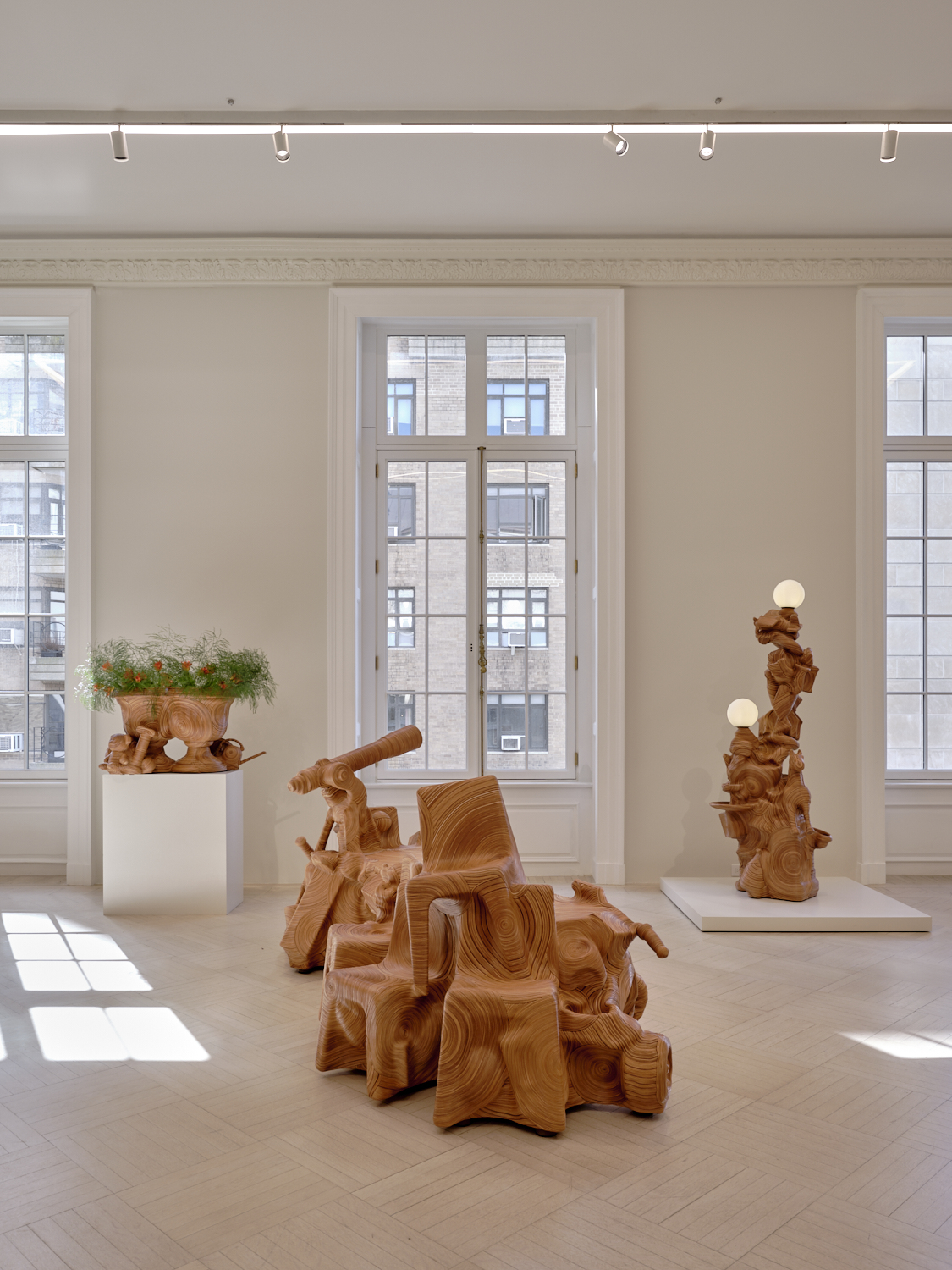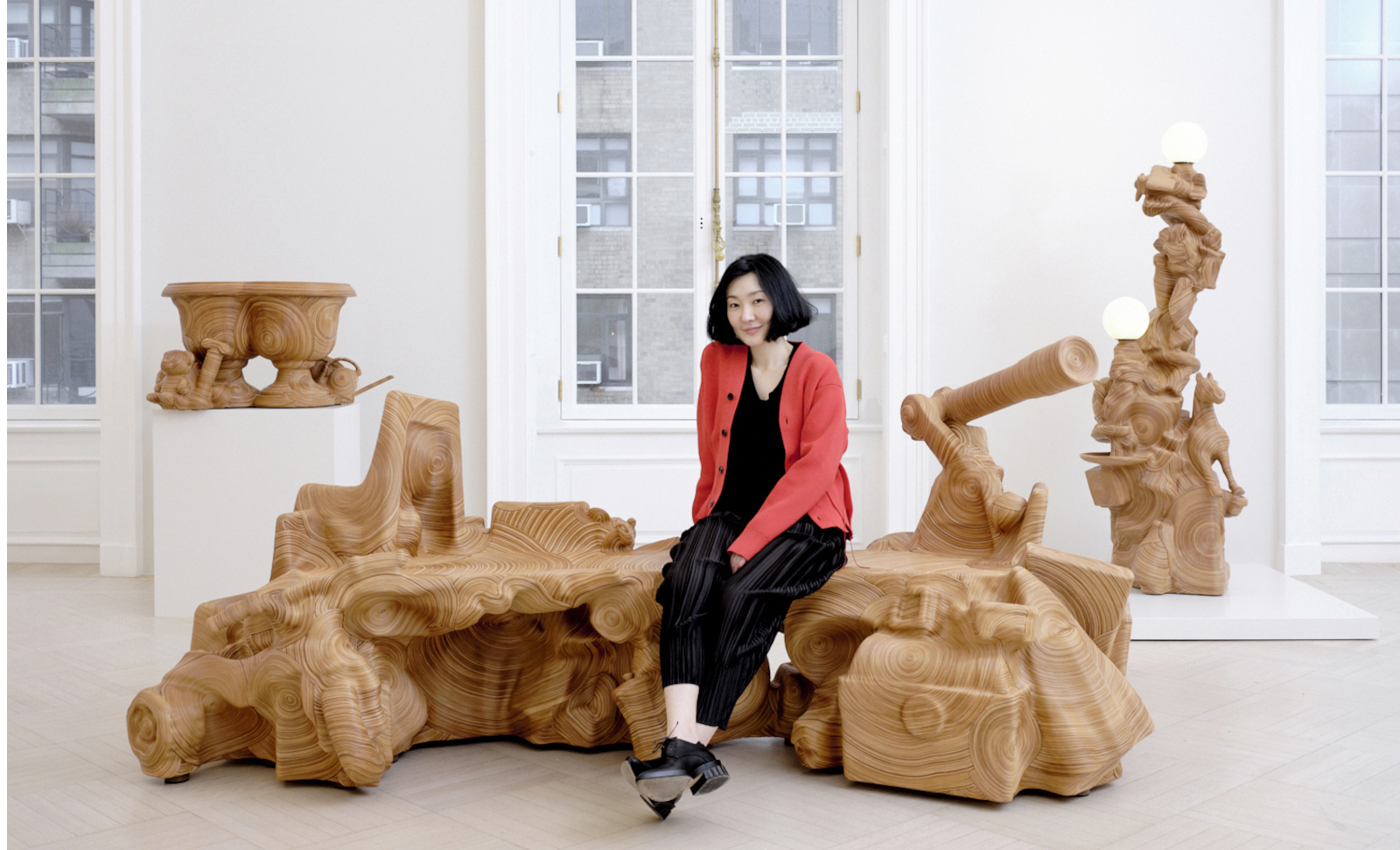
Jay Sae Jung Oh’s furniture is a little like a Stereogram: It’s abstract at first, but look long enough and silhouettes of familiar forms come into focus — the handlebars of a bicycle, an M&Ms coin bank, the head of a rocking horse. These objects, which she rescues from dumpsters and curbs, are held together by tightly wrapped swirls of leather cord. 'I want to make people appreciate what they have and what they might have thrown away,' says the Korean-American artist, who is based in Seattle.
Oh’s work has appeared in a number of recent high-profile exhibitions including “Mirror Mirror” at Chatsworth House, “Conversation Pieces” at the San Francisco Museum of Modern Art, and “Objects USA 2020” at the New York gallery R & Company. And the Cooper Hewitt museum recently acquired one of her chairs. But “Salvage 2.0: Domestic Landscape,” which is on view at Salon 94 Design until 20 April 2024, is her first solo show.
Jay Sae Jung Oh's furniture on view at Salon 94
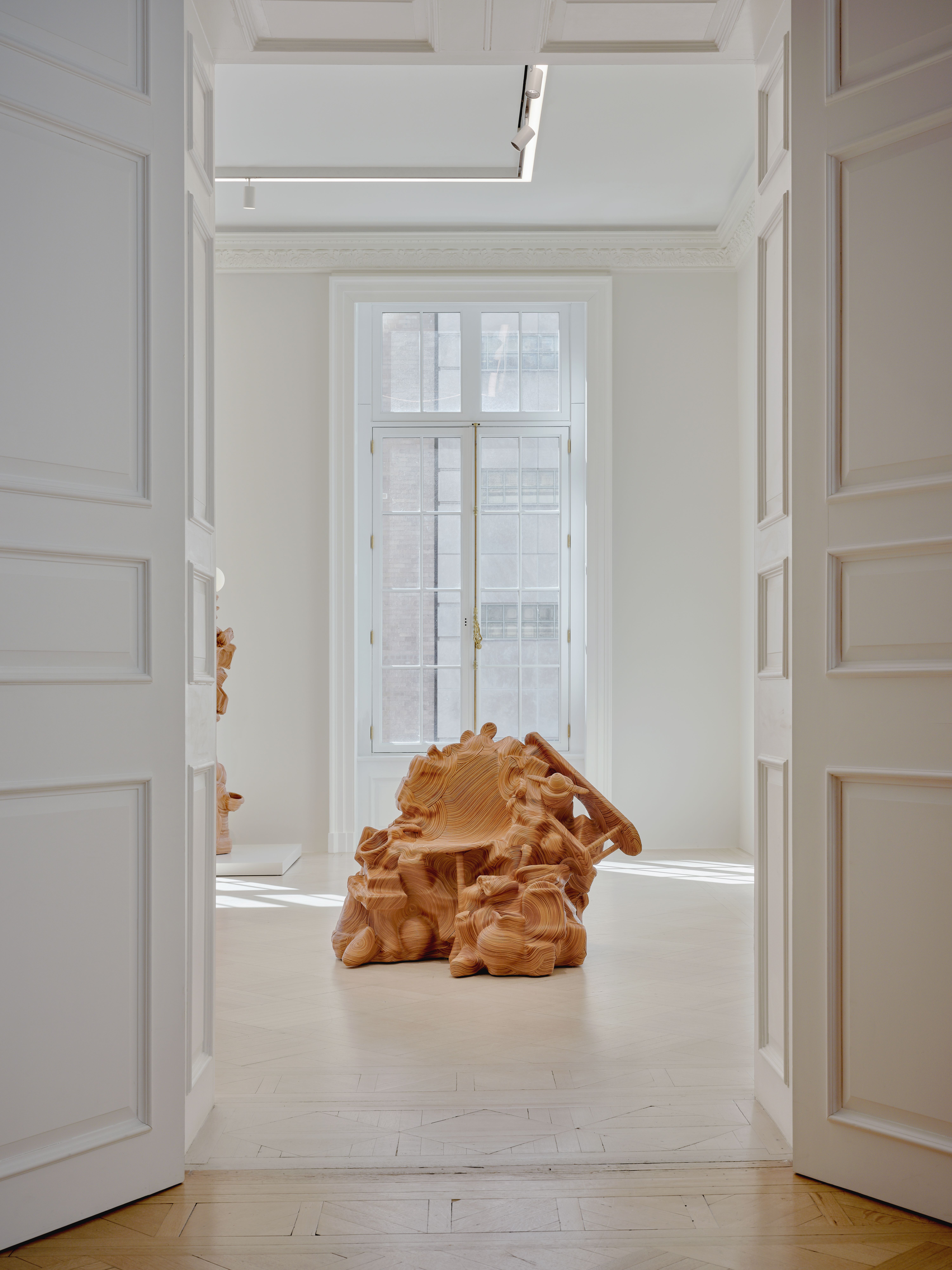
Oh has been making furniture out of cast offs since she was an industrial design student at the Cranbrook Academy of Art, where she earned her MFA in 2011. In her classes, she was learning about sustainability and how designers could make products that left a lighter footprint on the environment. But each time she walked back to her dorm, she noticed that a lot of lightly used stuff was piled up in dumpsters, waiting to be hauled away. She felt cognitive dissonance in being taught to design more products, adding to the waste problem.
'I felt like I had to do something,' Oh says. So she started bringing objects to her studio knowing that she wanted to repurpose them, but not exactly how. 'My classmates were joking to me that you're making another dumpster in the studio,' she says. Functionality was important to her, so furniture became the answer. She glued and taped things together and then wrapped them in jute. These early objects earned instant acclaim.
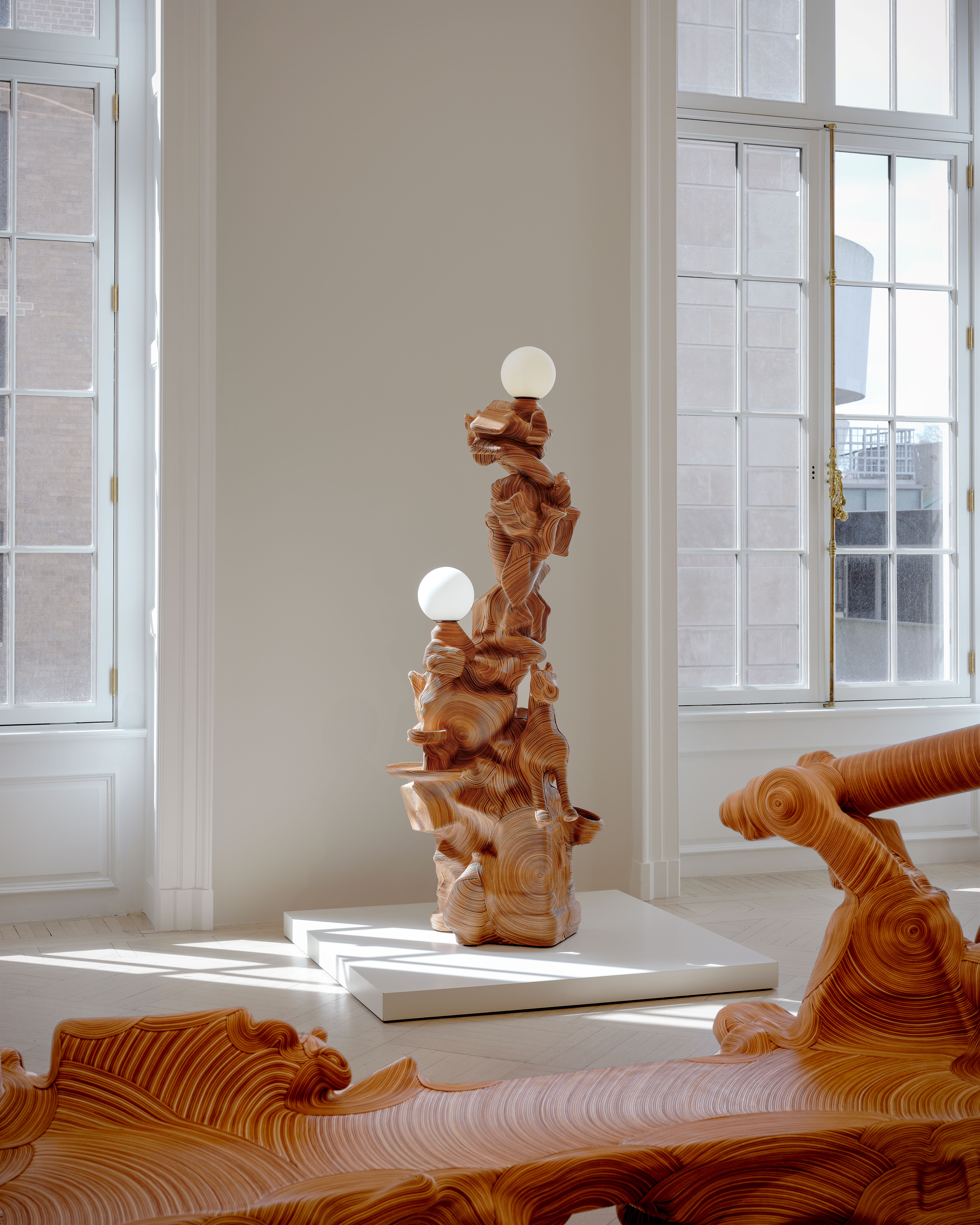
At first, you could still make out the composite objects quite clearly, but as her practice progressed, she began to mass everything together more closely and the pieces became more sculptural. She works spontaneously and intuitively, assembling items until she’s satisfied with the overall form. Then she’ll map out a pattern of jigsawed whorls and swirls to overlay on the piece and start to meticulously wrap the cord. (She switched to leather a few years ago because it’s more durable.) She pays close attention to the natural variation in the vegetable-dyed material, which can range from pale blonde to chestnut, to further develop pattern and texture. Each piece takes around three months for her to make and can be wrapped in upwards of 1,500 meters of cord. In the end, the surface resembles tree rings.
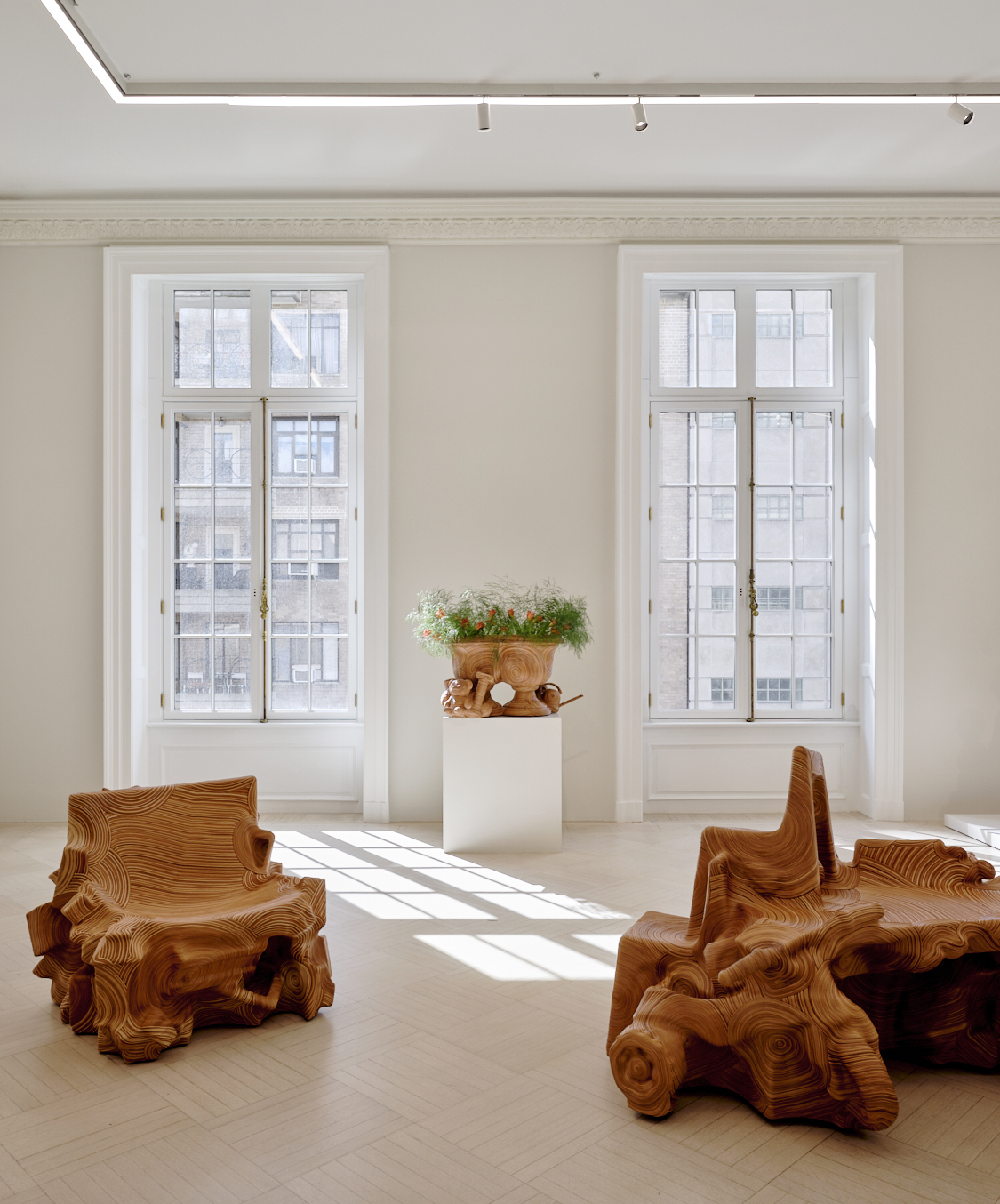
The collection she presents at Salon 94 consists of seven pieces — a bench, chairs, lamp, planter, and shelf — and as a family of objects, they become more compelling. The suite shows how she works with the various shapes she encounters to make pieces whose silhouettes have different characteristics: some are sharper, some are more rounded, some consist of objects that represent a specific theme.
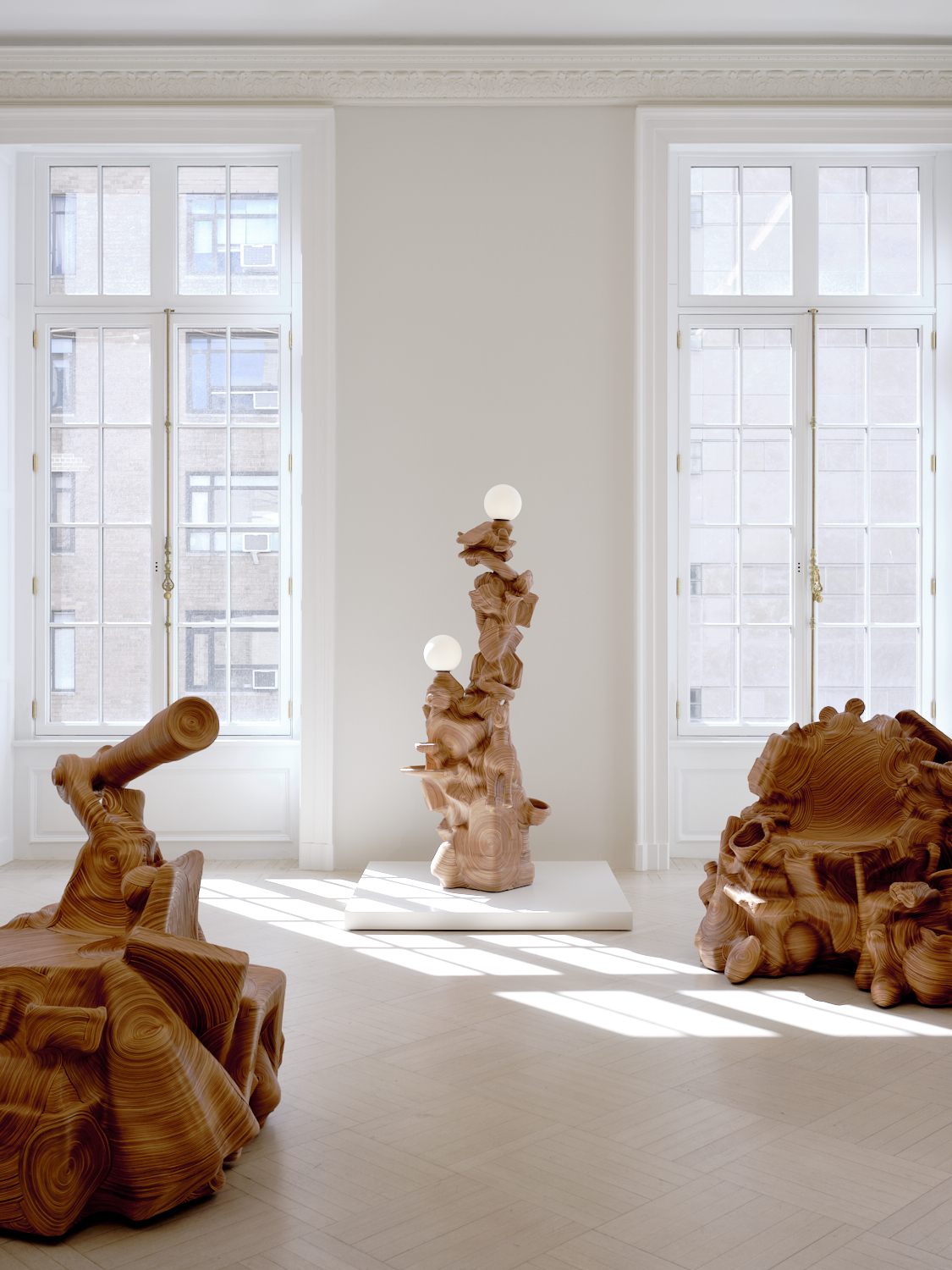
As time has gone on, the way Oh thinks about her work has shifted. At first, she was confronting the culture of disposability. Now she’s contemplating the nature of objects and has started to incorporate personal mementos, like souvenirs from childhood vacations, into her work. 'They contain our memory and our history,' she says. Collectors of her work have also started to ask her to tuck their own sentimental objects into commissions. In a way, she’s also preserving objects, creating something like a fossil record in furniture. 'I think about how some of these things won’t exist in 20 or 30 years,' she says.
Salvage 2.0: Domestic Landscape by Sae Jung Oh is on view until 20 April 2024
Salon 94 Design
3 E 89th Street
New York, NY 10128
salon94design.com
saejungoh.com
